Verdict
The 1More Evo are the company’s best true wireless so far, with engaging audio, good noise cancellation and very good fit and comfort levels. If you can get them for less than their RRP, they offer very good value.
Pros
- Well balanced, clear and detailed performance
- Effective noise cancellation
- Comfortable to wear
- LDAC Bluetooth support
Cons
- Connection can drop severely in busy areas
- Better noise cancelling options available
- Limited on-ear controls
Availability
- UKRRP: £159.99
- USARRP: $169.99
- EuropeRRP: €169.99
- CanadaRRP: CA$214.99
- AustraliaRRP: AU$229.99
-
ANCClaims to suppress sounds by up to 42dB -
EqualiserSoundID personalisation alongside custom EQ presets -
BluetoothSupports playback of audio over LDAC
Introduction
1More are no strangers to launching several wireless earphones in a relatively short period of time, the Evo are the company’s top tier effort and the fourth we’ve reviewed in several months. We’re struggling to keep up.
But the Evo can hold claim to being the most advanced true wireless from 1More in some time in terms of its feature set, packing Sony’s LDAC codec for Hi-Res audio support over a Bluetooth connection, along with hybrid noise cancellation.
So are Evo not just the best true wireless from 1More, but one of the best value performers at their price? Quite possibly.
Design
- Stylish in appearance
- Good fit and seal
- Responsive touch controls
All the true wireless we’ve reviewed from 1More have conformed to the same appearance: an oval shaped touch surface and bulbous housing that’s ergonomically shaped to fit easily into the ear. The Evo are the best example of that look I’ve encountered from 1More so far.
For my ears at least, they slot in easy, with a slight twist lock them in and, so far, I haven’t experienced any discomfort wearing the Evo. The passive noise isolation of the design is good, and unlike some of 1More’s cheaper efforts like the PistonBuds, the touch controls respond well.
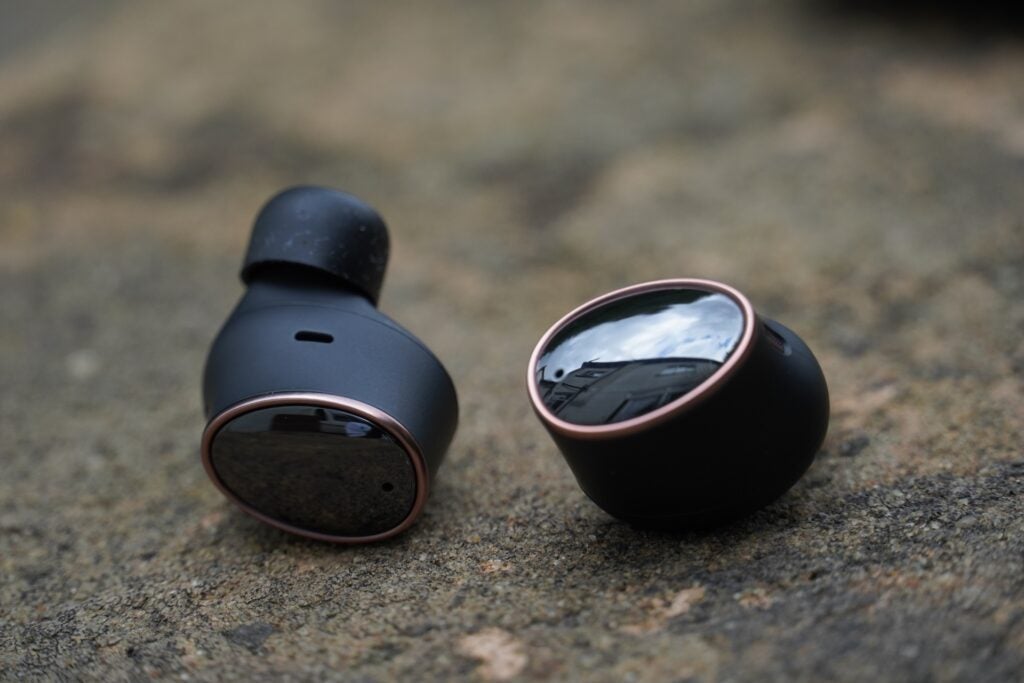
The surface area for the touch controls is bigger, so there’s less of an issue for presses to not be accepted; and they’re simply more responsive: double press for playback, triple tap for voice control and hold to swap between noise cancelling modes. All work with a minimum degree of fuss.
The disappointing aspect of the controls is that they are limited to just double and triple taps. Jump into the 1More app and there’s the option of adding/swapping track skipping and volume adjustment, but it would have been nice if there were more controls (with playback mapped to a single tap) to avoid having to take your mobile device out as often.
For water resistance 1More claim IPX5, which is better than a number of noise cancelling buds by being able to resist a spray of water such as that from a water tap. Five ear-tips are provided along with the default medium in extra small, small, large and extra-large.
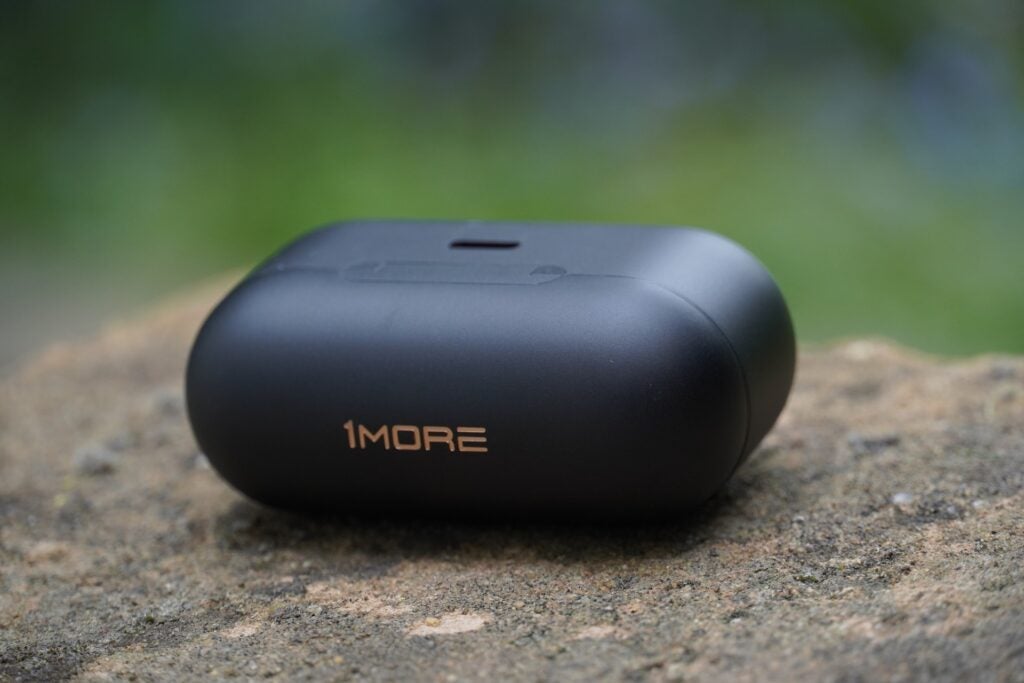
Aesthetically the Evo are quite nice for true wireless buds. There’s an understated, minimalist look I like; the glossy, reflective touch surface with a gold outline gives it a premium appearance, more so than the likes of Jabra Elite 7 Pro or even Beats Fit Pro earphones. They’re only available in black and white, so there are none of the colourful options you get with 1More’s cheaper earphones.
The charging case is also small, and the earphones easy to pluck from the cradle. There’s a small LED light on the front to denote the current battery status, with a USB-C port on the rear for charging and a rubbery surface underneath to plant the case on Qi wireless charging mat.
Features
- Effective noise cancellation
- Connection can suffer in busy areas
- Decent battery life
Sticking with the battery, 1More claims 5.5 hours with ANC on and 8 with noise cancelling off. In total, you get three-and-bit charges from the case for 20 hours with ANC and 28 without. That’s about average for true wireless around this price, the Sony LinkBuds S are 6 and 20 hours as a measure of comparison.
Listening to them for an hour took them down by around 15%, which is actually a little better than the figure 1More states, with the potential for more than six hours. There’s support for fast charging (15-minutes for four hours) and wireless charging.
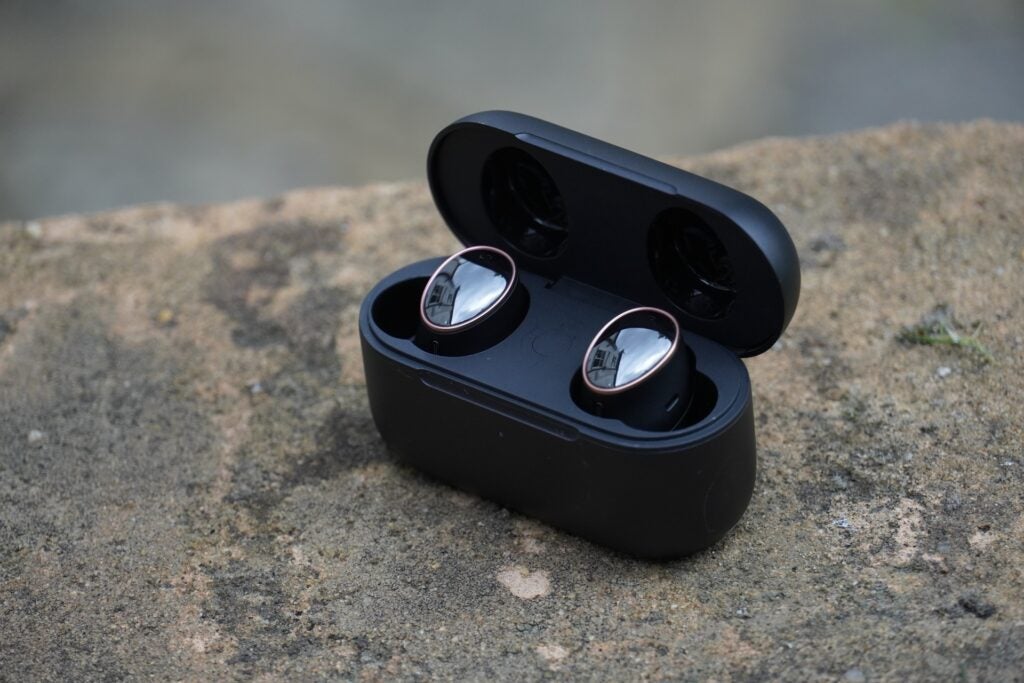
The shape of the buds’ provides a good foundation for the ANC – the 1More are adept at removing sounds from being a bother.
Walking around the Southwark and Blackfriars area, the sound of traffic was reduced to whooshes going past, general ambient sound and hubbub of city life were kept effectively at bay.
On the Underground they were better than expected, the sound of the wind noise rushing past was suppressed enough that I could listen to music with minimal distractions. At the Tube’s loudest the 1More’s QuietMax technology couldn’t dispel the noise as well, and the Evo doesn’t reject sounds as completely as the Bose QuietComfort Earbuds and Sony WF-1000XM4, but this is a solid effort.
Wind noise can be an issue in confusing the Evo’s microphones. That can be rectified by heading into the 1More Music app where there are a variety of noise cancelling modes to select for your situation, from Strong, Mild, Wind Noise Reduction and Adaptive. Wind Noise Reduction doesn’t totally remove the distortion – it smooths out the wrinkles for fewer disturbances.
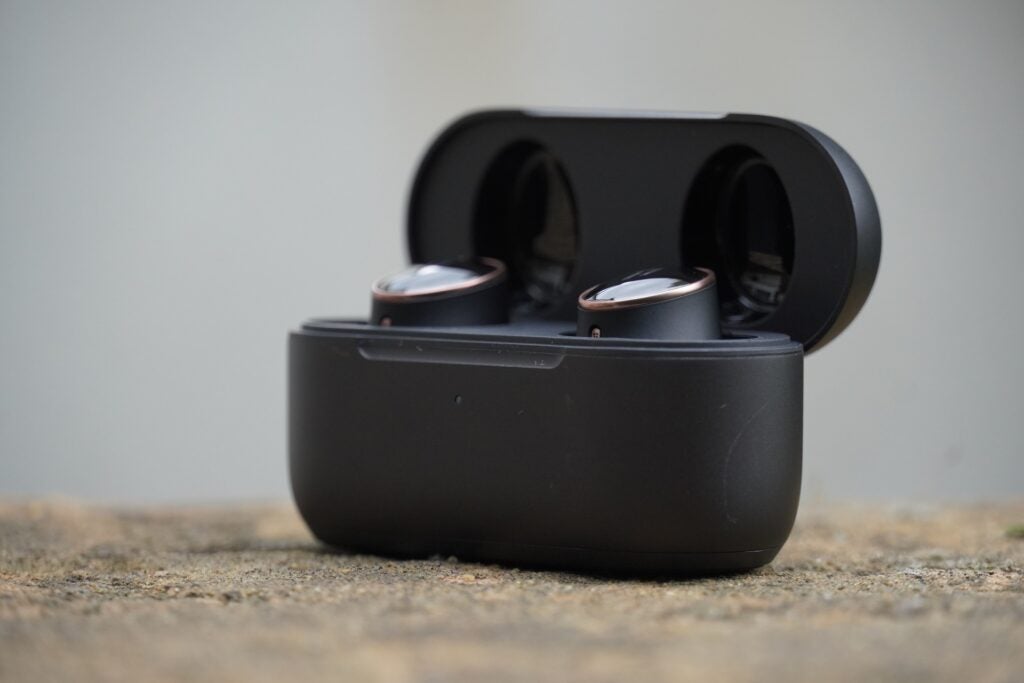
The transparency mode brings greater awareness (as you’d expect) alongside a broad sense of detail – I can tell the difference between a car or something larger going past. But it lacks the pin-sharp detail and clarity of the Bose and Sony, both of which sound more natural, too.
The 1More Music app features customisations from controls to Smart Playback (auto-pauses and play), and equaliser settings, with the choice of creating your own (up to three slots) twelve preset options (Bass Boost, Vocal Booster, Acoustic, etc) and Sonarworks’ Sound ID, which personalises the performance based on your hearing ability.
If you’ve ever created a Sound ID profile before in the 1More app, that’s carried across all 1More earphones. I found the one I created with the Colorbuds 2 had more of an effect on the Evo, with a bigger, wider and more powerful presentation.
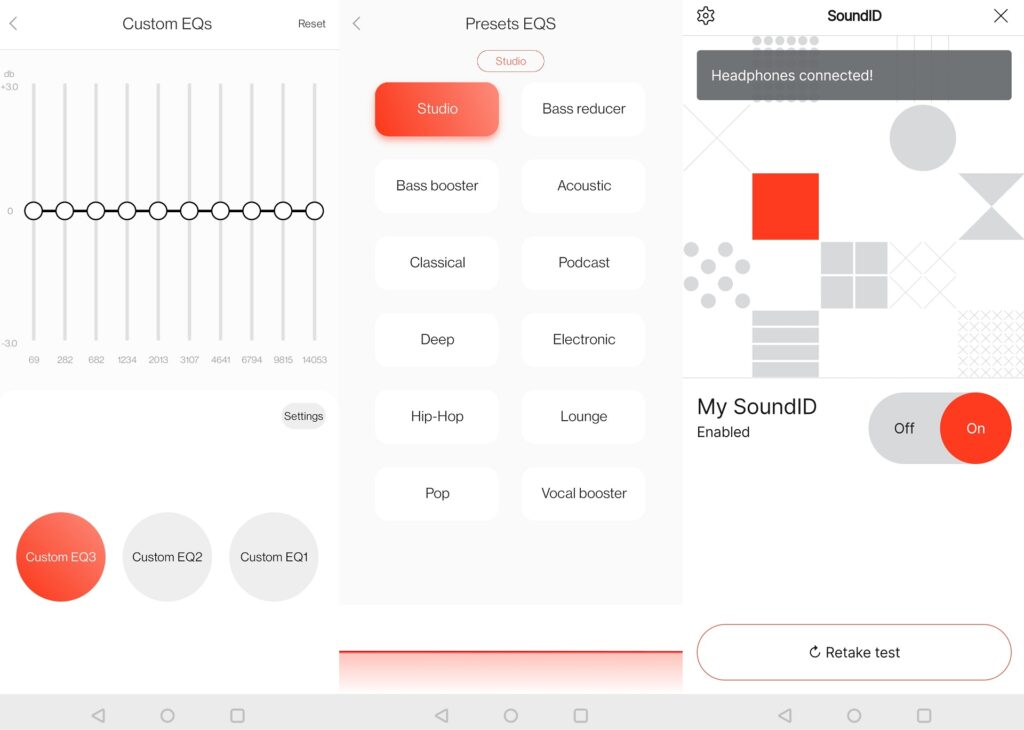
Bluetooth connectivity is v5.2, and like the Colorbuds 2, the connection can get decidedly choppy in busy areas. Walking through the concourse at Waterloo station, the signal got so jumpy that the music stopped playing for me at one point – that’s not great.
There’s no aptX on these earphones but there is LDAC, along with SBC and AAC. LDAC offers Hi-Res Audio (in lossy form) by trebling the bit-rate for audio over a Bluetooth connection. Simply put, higher bit-rates equals better sound. It is not enabled by default though; you need to go into the Bluetooth Connection setup and switch to ‘Priority on Sound Quality’. That will affect the strength of its wireless connection, which as I mentioned above is not the greatest in busy places.

Call quality was above average. The microphones clearly picked up my voice, and while there was background noise to deal with, my voice was isolated well enough from it. The person on the other end did say there was an odd, persistent chirping which seemed to be caused by the earphones themselves.
Sound Quality
- Clear, detailed sound
- Bass performance offers good variation
- Fairly neutral and balanced tone
The 1More Evo are not unlike the Colorbuds 2 I reviewed earlier in 2022. They share similar characteristics as both boast a clear, detailed soundstage and crisper approach to the top end of the frequency range, but the Evo go further than the Colorbuds 2 with their more dynamic performance and stronger bass.
This isn’t much of surprise, the 10mm dynamic and armature driver is bigger and more potent than the Colorbuds 2’s 7mm dynamic set-up. Listening to Billie Eilish’s xanny and bass has a better profile, it’s more evident from the start of the track, and punchily described with no noticeable distortion when the track digs into its more explosive beats.
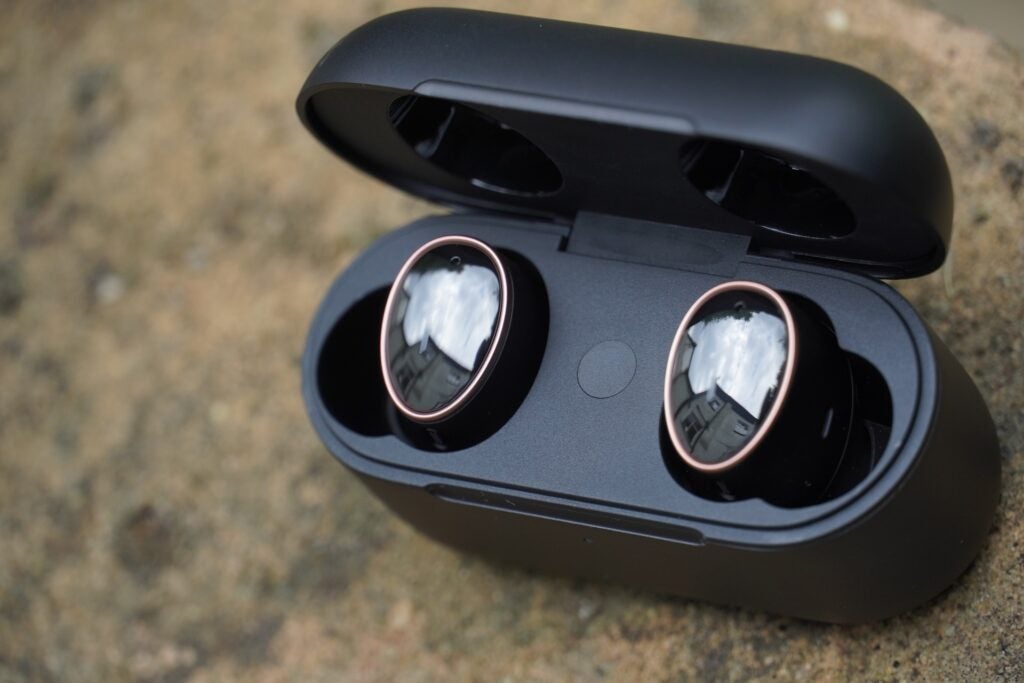
It’s a solid (as in weighty) and varied bass performance that delivers more punch, the Colorbuds 2’s performance is feebler in comparison even when the volume is pushed up. It’s also much more refined than the 1More True Wireless ANC, where the bass performance was quite chunky and hard in their ANC mode.
At normal volumes the Evo is a little diminished, which seems to be the case with the rest of 1More’s current output. Push the volume up and the soundstage is wider, music supplied with more energy. Tom Morello’s Voodoo Child is a big, loud and dynamic track when listened to on the 1More.
There’s good balance and timing across the frequency range in a track like Nick Mulvey’s Nitrous, the bass of the song’s percussive elements is measured, the midrange fed with lots of detail that bring out the plucking of the guitar’s strings well, while Mulvey’s voice and the background vocals are relayed with clarity.

There’s a fairly neutral tone to the 1More Evo’s default sound that’s maintained across a variety of music genres from rap to pop and orchestral songs, the Evo take on a controlled and mature approach. Along with a wide soundstage and stereo image that describes good depth in a track like Kendrick Lamar’s United in Grief, and the Evo’s regularly impress.
The top end of the frequency range is clear and sharp, showing some good variation and attack in describing the piano notes of GoGo Penguin’s Raven. High frequencies are clearer and have a greater presence than on the WF-1000XM4, but the 1More doesn’t quite boast the same levels of definition or detail. Nonetheless, the Evo’s sound is a very good attempt and better than I’d have expected.
Latest deals
Should you buy it?
Balanced, engaging audio In some ways, the 1More sound better than Sony’s WF-1000XM4, their balanced and refined performance is rewarding with many genres
You can get better performance The noise cancellation is good but there is better available, and wireless connection is fine in quiet areas but can go AWOL in busy places
Final Thoughts
The general gist of the 1More Evo is that they are better than expected. The fit and design is the best of 1More’s current true wireless; the sound is balanced, and the noise cancellation is effective.
The competition in the middle of the market is tough, with an array of options attempting to do the same thing. While the Evo don’t stand out above the fray in that regard, they are the best 1More true wireless earbuds I’ve tested so far.
How we test
We test every headphones we review thoroughly over an extended period of time. We use industry standard tests to compare features properly. We’ll always tell you what we find. We never, ever, accept money to review a product.
Find out more about how we test in our ethics policy.
Tested with real world use
FAQs
1More are a good brand if you want a good mix of value and performance at affordable prices. Their products aren’t quite up to the overall standard of the best in the market, though.
Sustainability
Trusted Reviews’ holds the fact that global warming is not a myth as a core value and will continuously endeavour to help protect our planet from harm in its business practices.
As part of this mission, whenever we review a product we send the company a series of questions to help us gauge and make transparent the impact the device has on the environment.
We currently haven’t received answers to the questions on this product, but will update this page the moment we do. You can see a detailed breakdown of the questions we ask and why in our sustainability info page.
Jargon buster
ANC
ANC (Active Noise Cancellation) uses an array of microphones in a headphone to detect the frequency of the sound coming at the listener, with the ANC chip creating an inverse wave (i.e. opposing sound) to suppress any unwanted external noises.
LDAC
LDAC is an audio technology from Sony that allows for higher quality audio streaming over a Bluetooth connection, with bit-rates of up to 990kbps

























